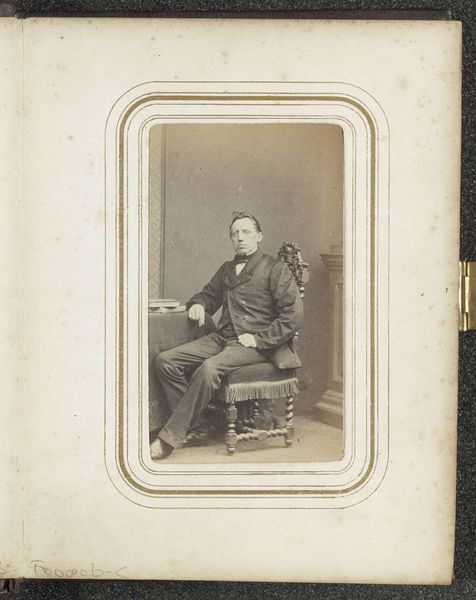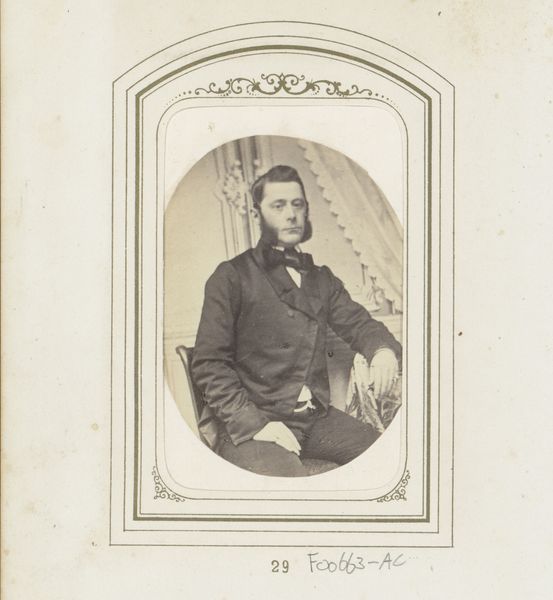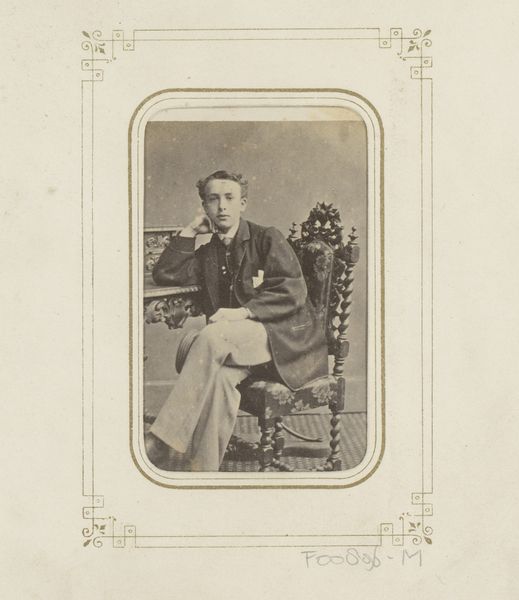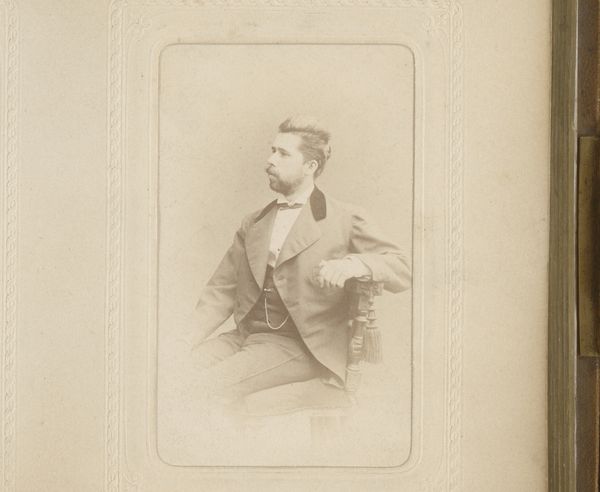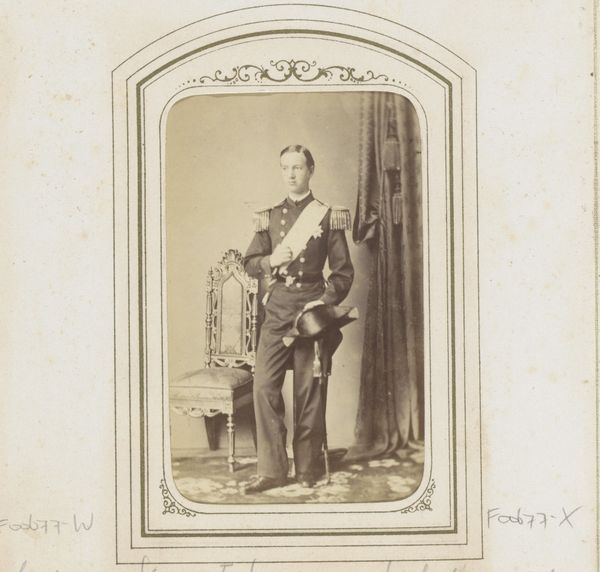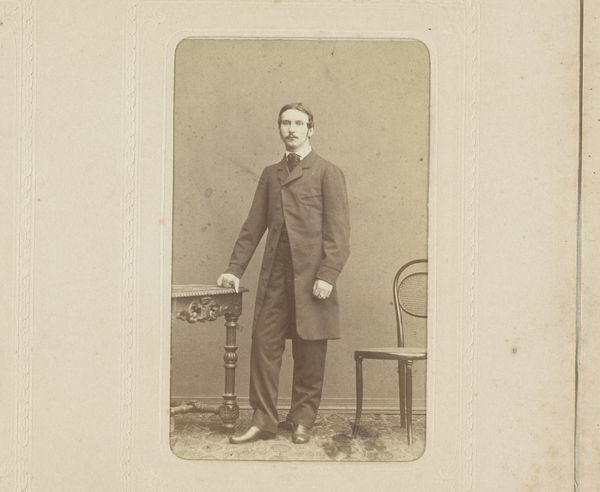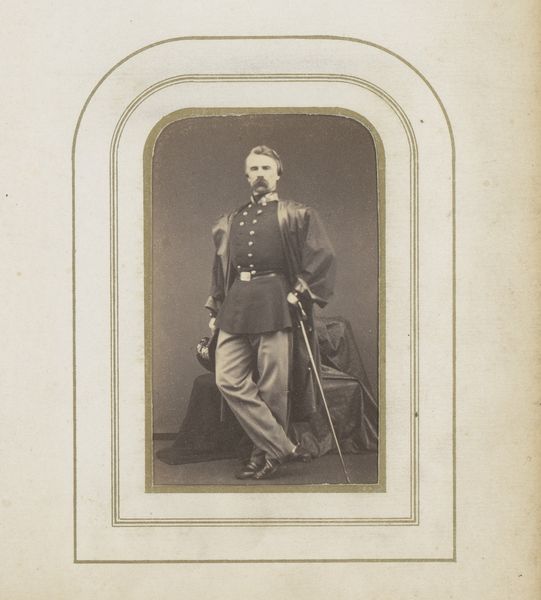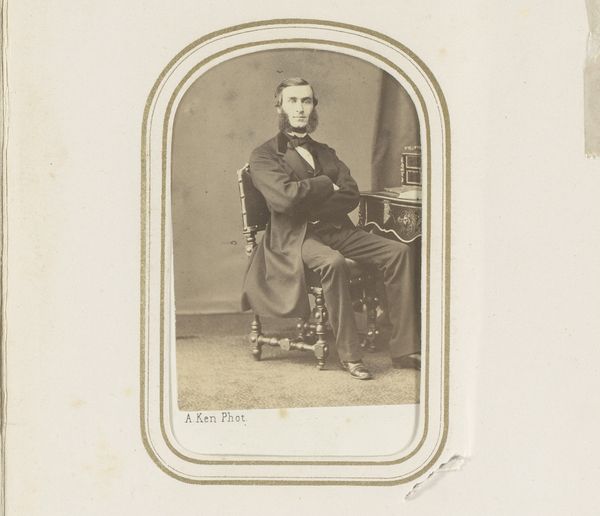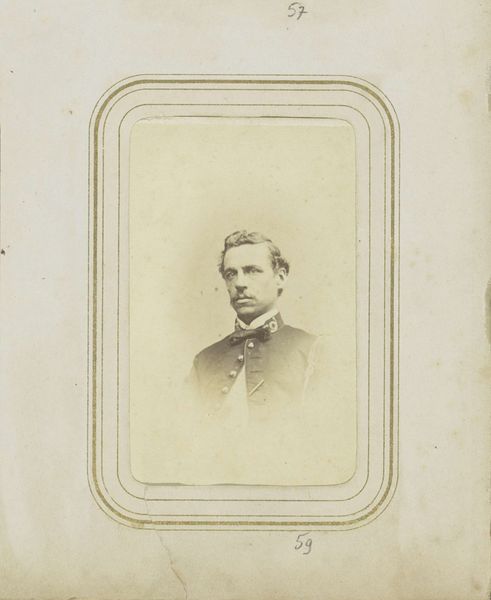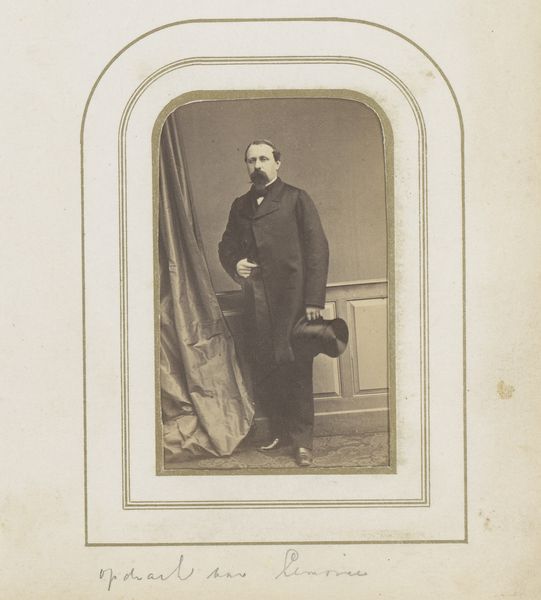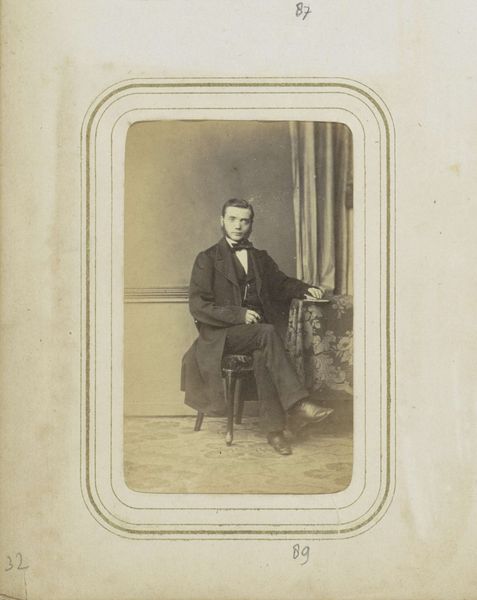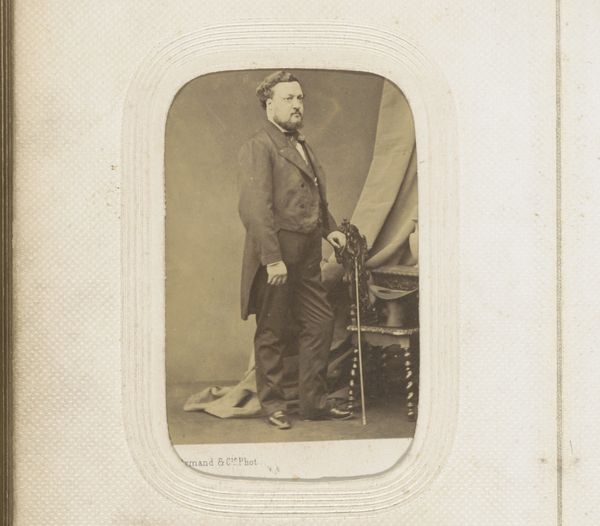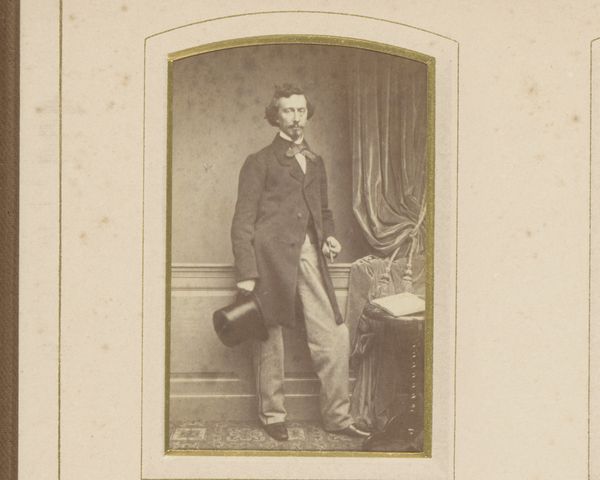
photography
#
portrait
#
photography
#
genre-painting
Dimensions: height 83 mm, width 50 mm
Copyright: Rijks Museum: Open Domain
Editor: Here we have Eugene Guérin's "Portret van een meisje," a photograph dating from between 1875 and 1885. What strikes me is the formal pose and almost melancholic air of the sitter. How do you interpret the imagery used here? Curator: Notice how the artist deliberately positions the sitter in the center of the composition, using shadow and light. The portrait is not merely about representing this particular individual, but rather functions as a symbol of broader cultural ideals around gender, status and visibility. Photography's accessibility at this time, remember, began democratizing portraiture in fascinating ways. Editor: So the very act of taking a photo was symbolic? Curator: Precisely. It signifies the subject’s arrival into a certain social stratum and projects aspirations about future agency and authority, a relatively modern aspiration in that historical period. Also, the chair, draped cloth, even the sitter's apparel carry encoded social signals related to power and respectability. We can see these cues echoed throughout similar photographs during this time. What assumptions might we now bring about this figure, based on these conventional signs? Editor: I see what you mean; I'm projecting an entire narrative of respectability, one that probably overlooks a far more complex reality. Curator: Indeed. It speaks to how cultural memory and expectations become encoded within such images over time. These photographic "portraits" act like mirrors reflecting both then and now. Editor: I never considered how something that appears straightforward as a portrait photograph could contain such layers of meaning. This has given me a fresh appreciation for understanding imagery as cultural symbolism!
Comments
No comments
Be the first to comment and join the conversation on the ultimate creative platform.
